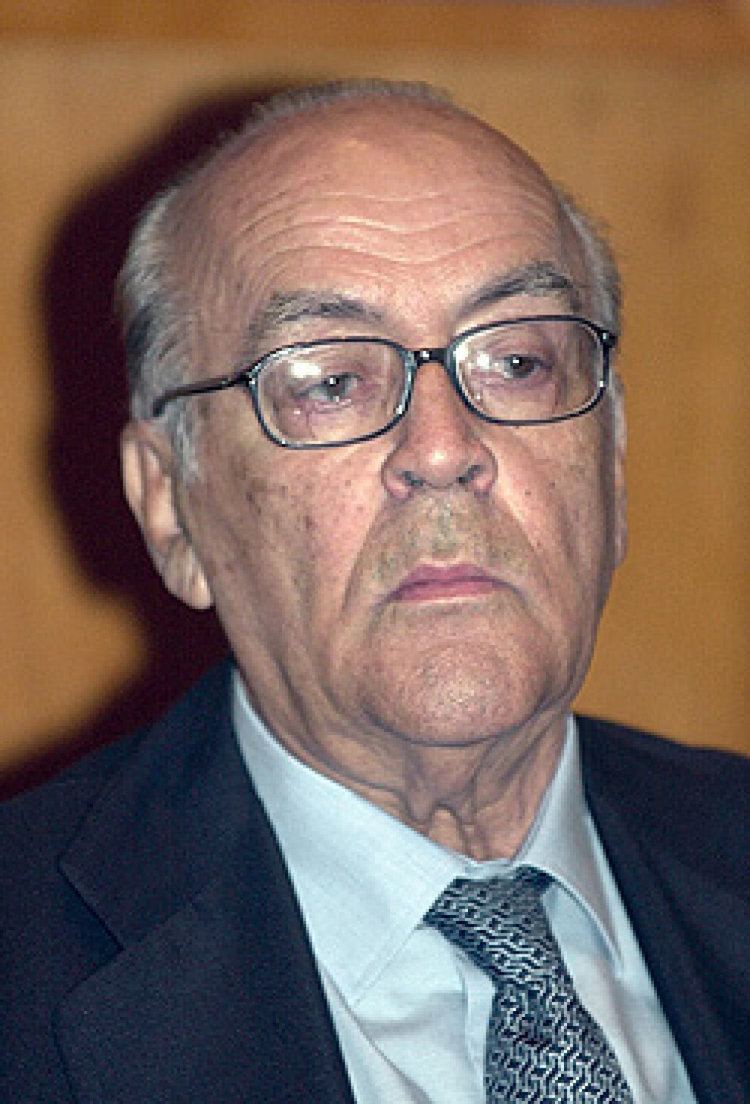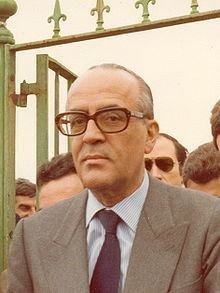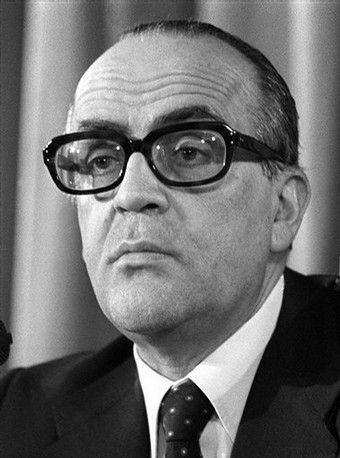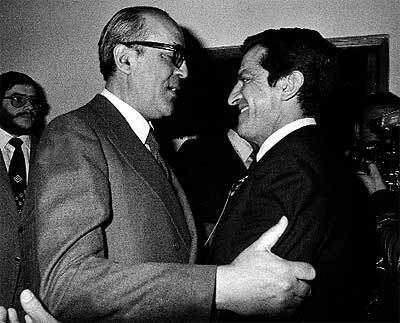Monarch Juan Carlos I Spouse Pilar Ibanez (m. 1954) Name Leopoldo Calvo-Sotelo | Succeeded by Felipe Gonzalez Preceded by Adolfo Suarez | |
 | ||
Deputy Rodolfo Martin VillaJuan Antonio Garcia Diez Succeeded by Juan Antonio Garcia Diez Died May 3, 2008, Pozuelo de Alarcon, Spain Similar People Adolfo Suarez, Carlos Arias Navarro, Juan Carlos I of Spain, Alfonso XIII of Spain, Felipe VI of Spain | ||
Investidura de don Leopoldo Calvo Sotelo
Leopoldo Ramón Pedro Calvo-Sotelo y Bustelo, 1st Marquis of the Ría of Ribadeo, GE ([leoˈpoldo ˈkalβosoˈtelo i βusˈtelo]; 14 April 1926 – 3 May 2008), known as Leopoldo Calvo-Sotelo was Prime Minister of Spain between 1981 and 1982.
Contents
- Investidura de don Leopoldo Calvo Sotelo
- INAUGURACION CAJA RURAL DE SORIA LEOPOLDO CALVO SOTELO SORIA 23 FEBRERO 1982
- Childhood
- Political career
- President of the Government of Spain
- Later years
- Personal life
- References

INAUGURACION CAJA RURAL DE SORIA - LEOPOLDO CALVO SOTELO - SORIA 23 FEBRERO 1982
Childhood

Calvo-Sotelo was born into a prominent political family in Madrid on 14 April 1926 with his father, Leopoldo Calvo Sotelo, as the writer and his mother, Mercedes Bustelo Márquez. His uncle, José Calvo Sotelo, was the finance minister under Miguel Primo de Rivera. Calvo-Sotelo graduated as a civil engineer from the School of Civil Engineers of Madrid now part of the Technical University of Madrid, working in the area of applications of chemistry to the industry.

He was the president of RENFE (the Spanish national railroad network) between 1967 and 1968. Calvo-Sotelo was elected solicitor (Deputy) of Franco's Cortes, representing industrialists in the Union of Chemical Industries, in 1971. A monarchist, Sotelo was one of the founders of an association of politicians, mostly of Rightists and Center Rightists, which disguised as the Fedisa publishing firm helped Spain's peaceful transition into democracy.
Political career

Calvo-Sotelo was designated Minister of Commerce by Carlos Arias Navarro to be in the first government of the Monarchy (December 1975 – July 1976). He advocated total destruction of Franco's ideals instead of mere superficial changes that politicians like Navarro planned. Calvo-Sotelo was kept in the cabinet of Adolfo Suárez upon his succession to premiership in 1976 and directed several centre-right and centre-left political associations into one party, the Union of the Democratic Centre (UCD). The UCD won in both the June 1977 and the March 1979 elections and Calvo-Sotelo was elected MP for Madrid.
President of the Government of Spain

Suárez decided to keep him in the Cabinet, first from 1978 to 1980 as Minister for Relations of the European Economic Community, then as Second Vicepresident in charge of economic affairs. After the resignation of Suárez on 29 January 1981, he was supposed to be appointed Prime Minister (Presidente del Gobierno) on 23 February, and advocated Spain's proposed entry into NATO as soon as possible. However, on that date a session of the Congress of Deputies was interrupted by the attempted coup of 23-F. After the failed coup, his appointment as Prime Minister was confirmed on 25 February by the vote of all the UCD members of the congress and 21 others as well, giving him a majority of 186 to 158. Splits in the UCD group led to the formation of three rival parties, the Democratic Action Party (Partido de Acción Democrática/PAD), which soon merged with the Spanish Socialist Workers' Party (PSOE), the Democratic and Social Centre (CDS) and Democratic Popular Party (PDP), resulting in the UCD being unable to count on sufficient support in the legislature. Fresh elections were called, resulting in a heavy defeat for the UCD, which won only 12 seats at the 1982 election compared to 168 in 1979. He served as Prime Minister until 1 December 1982 and was succeeded by the socialist Felipe González.
Later years
In 2002, Calvo-Sotelo was raised into the Spanish nobility by King Juan Carlos of Spain and given the hereditary title of Marqués de la Ría de Ribadeo (Marquis of the Ría of Ribadeo), together with the dignity Grande de España (English: Grandee of Spain), this in honor for his service.
Calvo-Sotelo was also a member of the Club of Madrid and of the Spanish Royal Academy of Engineering.
He died of cardiac arrest at his home in Pozuelo de Alarcón, on 3 May 2008.
Personal life
He was married to María del Pilar Ibáñez-Martín y Mellado and had eight children:
